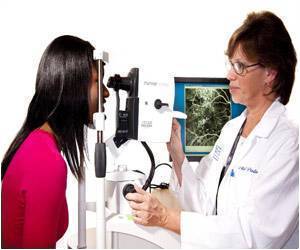A study suggests that sophisticated new optical quality metrics can identify older adults likely to have more rapid age-related declines in vision.

The study by Darren E. Koenig, OD, PhD, and colleagues of University of Houston College of Optometry defines three advanced optical measures that may help in predicting which older patients will have larger drops in visual acuity over time. "These fast-changing optical metrics allow the identification of patients at risk of being on a fast track to visual acuity loss," comments Anthony Adams, OD, PhD, Editor-in-Chief of Optometry and Vision Science.
Advanced Optical Measures Predict Change in Visual Acuity Dr. Koenig and coauthors performed a follow-up study in 148 older adults, aged 50 to 80 years. In addition to standard visual acuity testing, the participants underwent wavefront error (WFE) testing—a computerized test that can detect subtle abnormalities in the eye's handling of light. About 40 optical components based on WFE were calculated, including 31 different image quality measures, four measures of light scatter in the eye, and four measures of opacification (clouding) of the lens of the eye.
Four years later, visual acuity was measured again. The optical metrics were evaluated for their ability to predict the rate of decline in visual acuity during that time. The goal was to see whether any of the image quality or other metrics could predict which patients would have faster than usual age-related declines in vision.
Overall, the average change in visual acuity during follow-up was loss of 1.6 letters on the standard eye chart. That was consistent with the expected age-related decline.
However, a subgroup of 50 patients had larger changes in visual acuity during follow-up. In this group the average change was loss of 3.4 letters.
Advertisement
Together, these three measures accounted for 32 percent of the change in visual acuity in patients with larger-than-expected change in visual acuity. Older age explained at additional two percent of the change.
Advertisement
Advanced optical quality metrics can detect a wide range of minor imperfections in the visual performance of the eye. Computerized WFE analysis is becoming more widely available to detect these subtle vision defects, for example, as part of LASIK and corneal surgery.
The new study suggests that some of these WFE-based metrics may be useful in predicting which patients will have more rapid than usual age-related decline in visual acuity. "Correlations like those found here in fast changing eyes allow the identification of those at risk of being on a fast track to acuity loss," Dr Koenig and coauthors conclude.
"This raises the possibility that those patients may be able to be identified prior to their vision loss simply by measuring these optical components at the outset," Dr Adams adds. "The relatively recent ability to measure many components of the optics of the eye, beyond simply the refractive prescription for glasses or contact lenses, has made this research possible."
Source-Eurekalert









